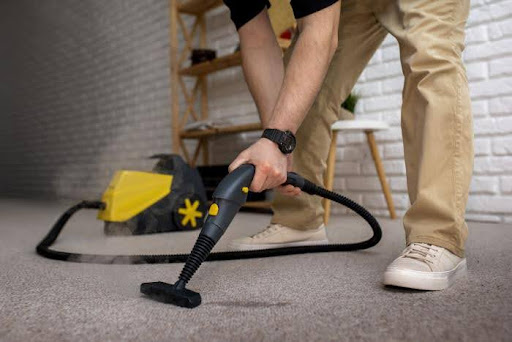Every time you see a discoloration on your carpet, you’d want to find the root cause and get rid of it as soon as possible. There are many causes of carpet discoloration and once you figure out which one caused it, you can prevent it from happening in the future.
When something like this happens, you are likely to call a professional since there’s no easy or quick fix to discolorations. The best thing you can do for now is to understand the causes so that you will be extra careful with your carpets next time.

Cleaners & Insecticides on Carpet
Oven, drain and some other cleaners can destroy the textiles in your carpet resulting in color changes. If one of these cleaning agents gets on your carpet, you can use vinegar to help cancel out the effect of the alkali and then rinse the area with water. Alkalis can vary in the carpet color stains the produce as it depends on the carpet color and the dyes used. Many other household cleaners and insecticides can cause discoloration to your carpet as well as change the textile. Furniture polish is a common one that isn’t noticed until the furniture is moved and you can see the spots that the polish came in contact with the carpet fibers. Furniture polish can have a particularly serious effect on any red dyes present in your carpet. If a red dyed carpet is exposed to furniture polish, it can cause green or blue spots. For red carpet owners, never polish your wood furniture without protecting the carpet first. Another is insecticides which can also cause color loss to your carpeting which are often noticed along the walls where pesticides are sprayed. Source: Dye Pro Carpet & Rug Restoration
Bleaches
Most people are aware that misuse of household bleaches on color fabrics may remove the color as well as stubborn stains. Accidental spills on carpets and Upholstery fabrics are equally damaging. Chlorine bleaches (sodium hypocholorite) are the most universally used. The so-called “all fabric” bleaches (Oxygen bleach), although slower acting, can cause bleaching and dye bleeding swimming pool chemicals (calcium hypochlorite) tracked into the home can bleach carpets and rugs. Also, most mildew stoppers contain bleach, which will affect textiles if used improperly. Spots caused by chlorine products are generally yellow. However, chlorine will cause some red dye stuffs to turn green. Source: Color Spot Carpet
Photo Oxidation
Photodegration, or photooxidation, refers to the degradation of carpet fibers or dyes due to exposure to light, particularly UV radiation from sunlight. Yellowing is a common manifestation of photooxidation in carpets. The breakdown of chemical bonds in the carpet fibers or dyes can result in a shift in color, often towards a yellowish tint. This effect is particularly noticeable in carpets that are exposed to prolonged sunlight or artificial light containing UV radiation.
Carpets made of polypropylene, silk, or wool fibers are more susceptible to photooxidation and it can cause those carpets to turn yellow more readily.
To mitigate yellowing and other color changes caused by photooxidation, using carpets with UV stabilizers, employing protective window coverings, and regular cleaning and maintenance are recommended. Additionally, selecting carpet materials and dyes that are less susceptible to photooxidation can contribute to maintaining the carpet’s original color over time. Source: Zerorez Carpet Cleaning
As mentioned earlier, a professional can help with this situation and restore your carpet – just give us a call!


